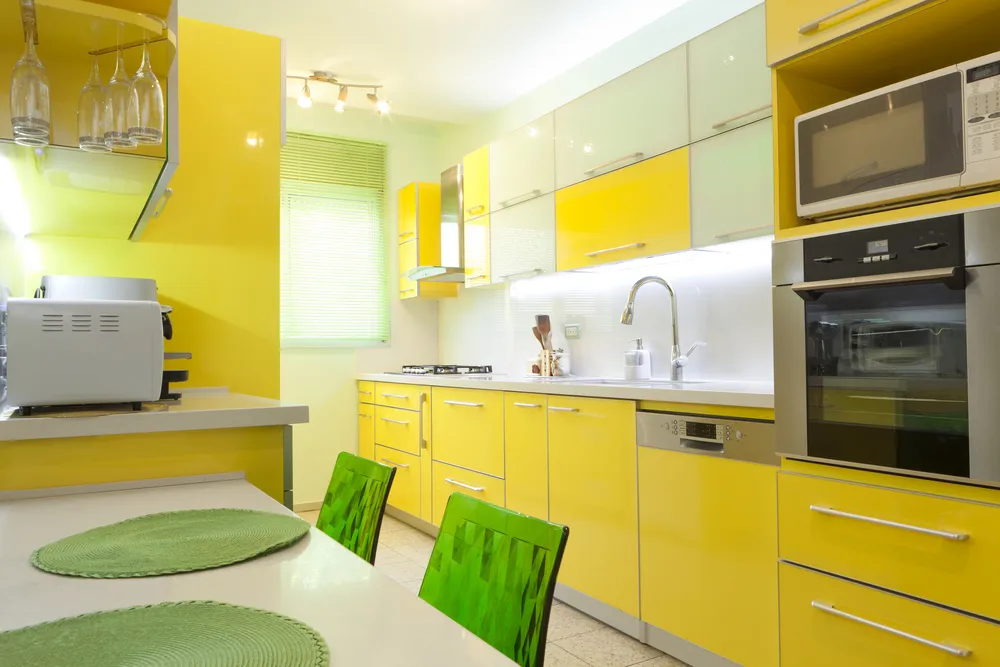The Allure of Yellow and Gray Kitchens
Yellow and gray have emerged as a top trend in summer kitchen decor, offering a perfect blend of warmth and sophistication. This color combination creates a bright and inviting atmosphere, ideal for the heart of the home. The versatility of this palette allows for endless design possibilities, from modern minimalist to classic farmhouse styles. The cool, calming effect of gray balances the vibrancy of yellow, creating a space that feels both cheerful and grounded. Whether you’re planning a complete kitchen remodel or simply looking to refresh your space, incorporating yellow and gray can make a significant impact. This article will dive into the top 5 trends to help you design your ideal summer kitchen.
Trend 1 Pairing Sunny Yellow with Sophisticated Gray
The first trend focuses on the dynamic duo: sunny yellow and sophisticated gray. This pairing offers a beautiful contrast that enhances the overall aesthetic of your kitchen. Yellow brings energy and a sense of optimism, while gray provides a neutral backdrop, allowing the yellow to pop. This combination is perfect for creating a cheerful, inviting space that feels fresh and modern. The key to success here is balance – neither color should overpower the other. Consider using yellow on accent walls, kitchen islands, or accessories, and incorporate gray through cabinetry, countertops, or flooring. This balance creates harmony, ensuring that your kitchen feels both vibrant and relaxing. The careful selection of shades is crucial for achieving the desired result.
Choosing the Right Yellow Shade
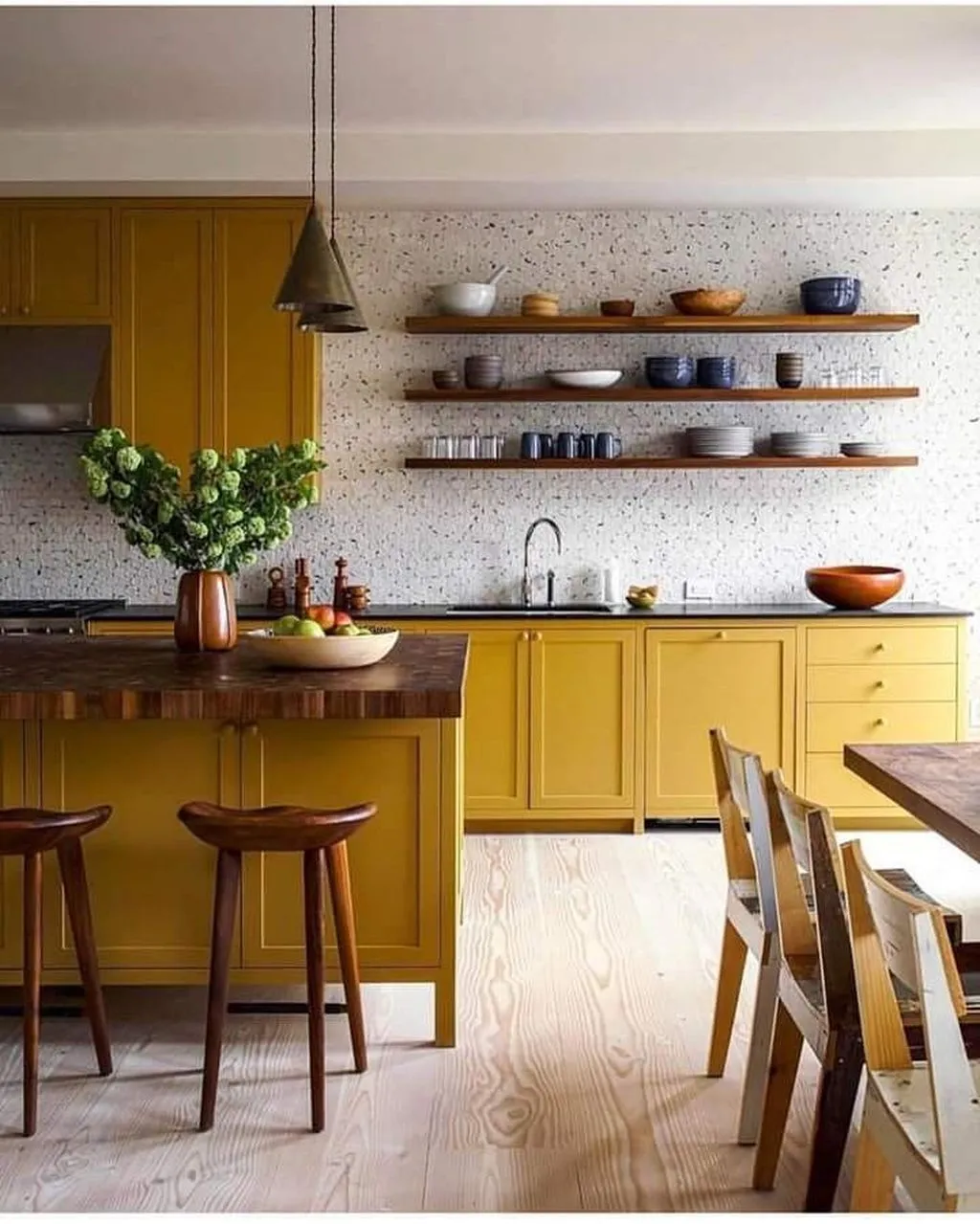
Selecting the right shade of yellow is paramount to the success of your design. Consider the natural light in your kitchen. Lighter yellows, such as butter or pastel shades, work well in spaces with limited sunlight, as they reflect light and create a brighter feel. For kitchens with ample natural light, you can experiment with bolder yellows like mustard or lemon. These shades can add a dramatic flair and create a focal point. Remember to test paint samples in your kitchen before committing. Observe how the yellow appears throughout the day under different lighting conditions. This will help you choose a shade that complements your kitchen’s unique characteristics and personal style. The right yellow can instantly transform your kitchen from drab to fab.
Selecting the Ideal Gray Tone
The versatility of gray makes it an excellent choice for pairing with yellow. There are numerous shades, from light, airy grays to deep charcoal tones. Lighter grays, such as dove or silver, create a sense of spaciousness and can make a small kitchen feel larger. These shades work particularly well in contemporary designs, providing a sleek and modern aesthetic. Darker grays, like charcoal or slate, add depth and sophistication, ideal for a more dramatic look. Consider the existing features of your kitchen when choosing your gray tone. If your kitchen has warm-toned wood elements, opt for a cool-toned gray to create balance. If your kitchen has cool-toned features, select a warmer gray. The goal is to create a cohesive and visually appealing space, where both colors complement each other perfectly.
Incorporating Color Through Accessories
Accessories are an excellent way to introduce color into your kitchen design, without committing to major changes. Start with yellow accents like dish towels, oven mitts, and canisters. These small pops of color can brighten up the space instantly. Incorporate gray through countertop appliances, such as toasters or coffee makers, or decorative items like vases or bowls. You can also consider artwork with a combination of yellow and gray to tie the whole theme together. The beauty of accessories is that they can be easily swapped out as trends change or your tastes evolve. This flexibility makes them a practical and cost-effective way to experiment with different color combinations and styles.
Trend 2 The Impact of Lighting and Natural Light
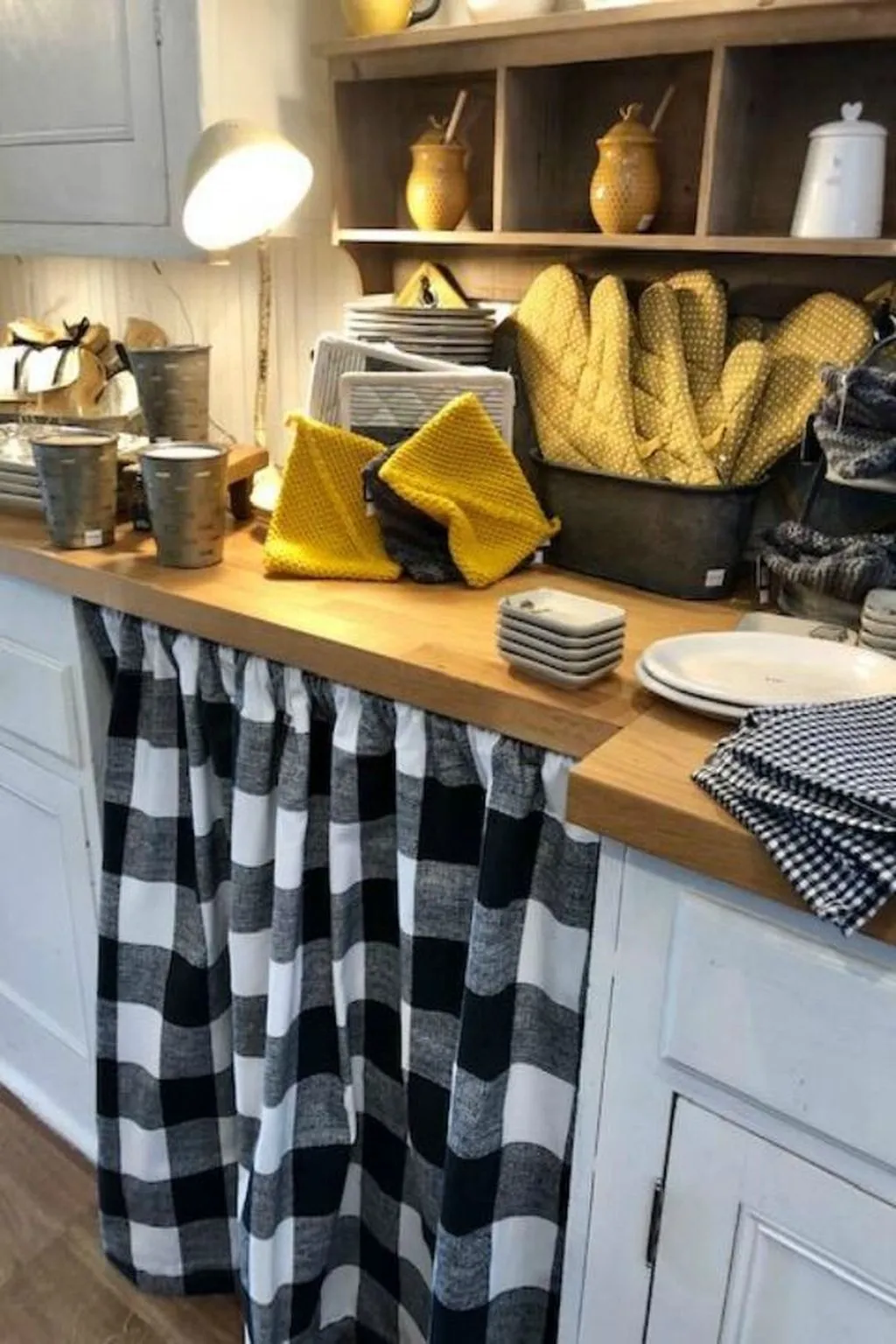
Lighting plays a crucial role in highlighting the yellow and gray color palette. Good lighting enhances the hues, creating a more inviting and visually appealing space. Natural light is the best form of lighting, so make the most of it. It brings out the vibrancy of yellow and the subtle nuances of gray, making the kitchen feel brighter and more spacious. When natural light is limited, strategic lighting fixtures are essential to achieve the same effect. Layering different types of lighting can create a well-lit and functional kitchen that reflects your unique style. Proper lighting enhances the overall aesthetic and functionality of your kitchen.
Maximizing Natural Light
To maximize natural light, keep windows clean and uncluttered. Consider using light-filtering window treatments, such as sheer curtains, to diffuse harsh sunlight while still allowing light to enter. If your kitchen has limited natural light, use mirrors strategically to reflect light and create the illusion of a larger space. Place mirrors opposite windows or in areas where they can bounce light around the room. Ensure that the placement of your kitchen island or workspace doesn’t obstruct the natural light source. The more natural light you can incorporate, the more vibrant your yellow and gray color scheme will appear. Embrace the power of natural light to brighten your kitchen and create a welcoming atmosphere.
Strategic Lighting Fixtures
When natural light isn’t enough, strategic lighting fixtures are essential. Layer different types of lighting to create a balanced and functional space. Overhead lighting, such as recessed lights or pendant lights, provides general illumination. Task lighting, like under-cabinet lights or spotlights, is crucial for specific areas, such as countertops and the cooktop. Accent lighting, such as wall sconces or decorative lamps, can add personality and ambiance. Choose lighting fixtures with a finish that complements your yellow and gray color scheme. Consider mixing metals like brushed nickel or chrome with the yellow and gray elements. Adjustable lighting, such as dimmable lights, allows you to control the mood of the kitchen throughout the day.
Trend 3 Textures and Materials to Enhance Design
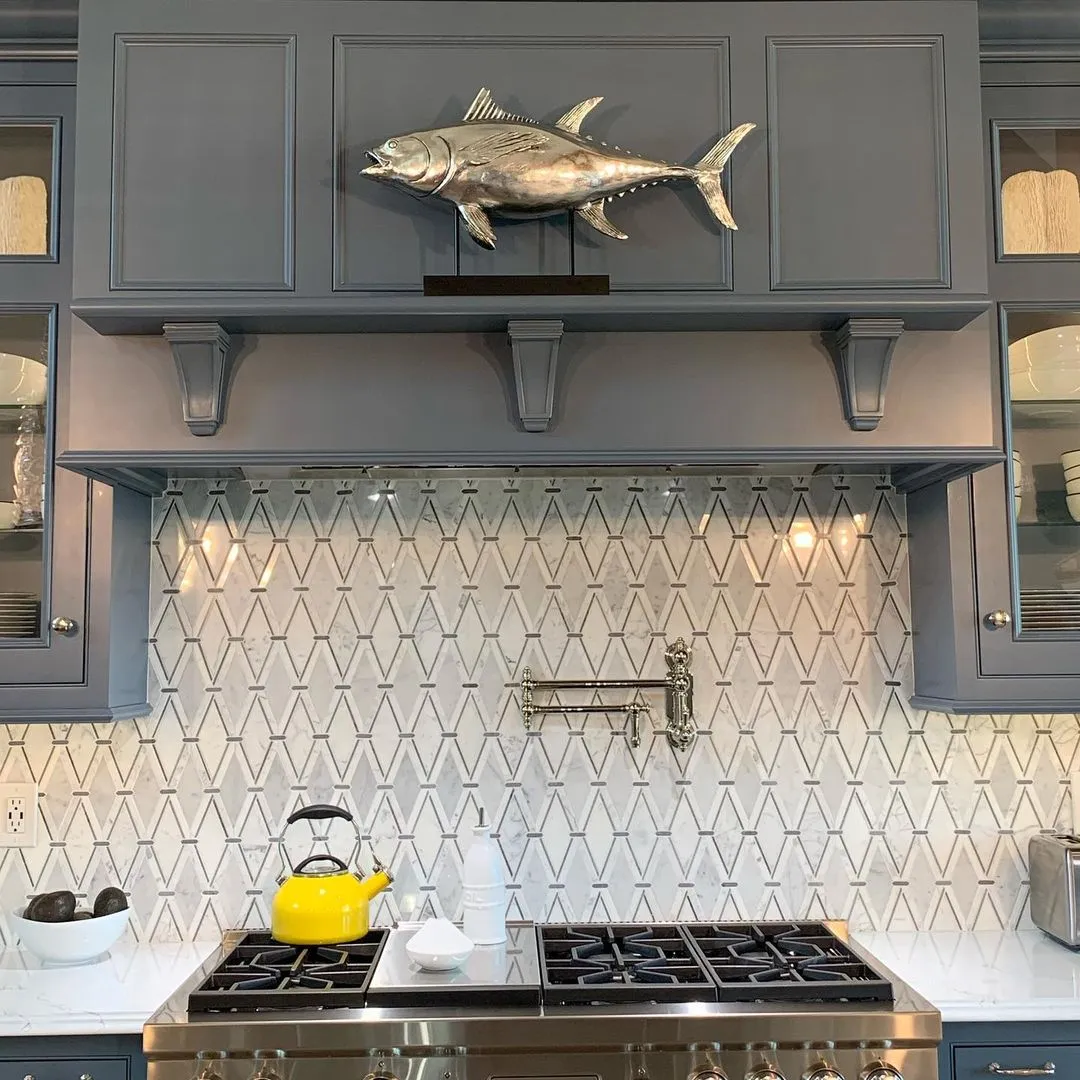
Incorporating various textures and materials can add depth and visual interest to your kitchen. Combining different textures can prevent the space from feeling flat and ensure a visually appealing design. Natural materials, such as wood, stone, and metal, bring warmth and character. They add richness and depth to the space, creating a more inviting atmosphere. These natural elements enhance the overall aesthetic of your kitchen and complement the yellow and gray color scheme. The right combination of textures and materials can elevate your kitchen design.
Using Wood and Natural Elements
Wood is an excellent material to incorporate into a yellow and gray kitchen. Wooden elements bring warmth and a natural feel to the space, contrasting beautifully with the coolness of gray. Use wooden cabinets, countertops, or open shelving to add texture and visual interest. Consider a light-colored wood to keep the kitchen feeling bright and airy, or a darker wood for a more dramatic look. Stone elements, such as granite or marble countertops, can add sophistication and elegance. The variations in natural stone create unique patterns and textures, adding to the overall aesthetic. Incorporating natural elements grounds the space, making it feel connected to nature.
Incorporating Metal and Glass
Metal and glass are great materials to use in conjunction with yellow and gray, adding a touch of modern elegance. Metal accents, such as stainless steel appliances, faucets, or cabinet hardware, provide a sleek and contemporary look. Choose a metal finish that complements your gray and yellow color scheme. Brushed nickel or chrome pairs well with cooler grays, while brass or gold adds warmth and complements the yellow tones. Glass elements, such as glass-front cabinets or pendant light fixtures, add visual interest and create a sense of openness. The reflective qualities of glass can also help to brighten the space. Combining metal and glass adds sophistication and visual interest to your kitchen design, enhancing the overall style.
Trend 4 Pattern Play Adding Interest with Design
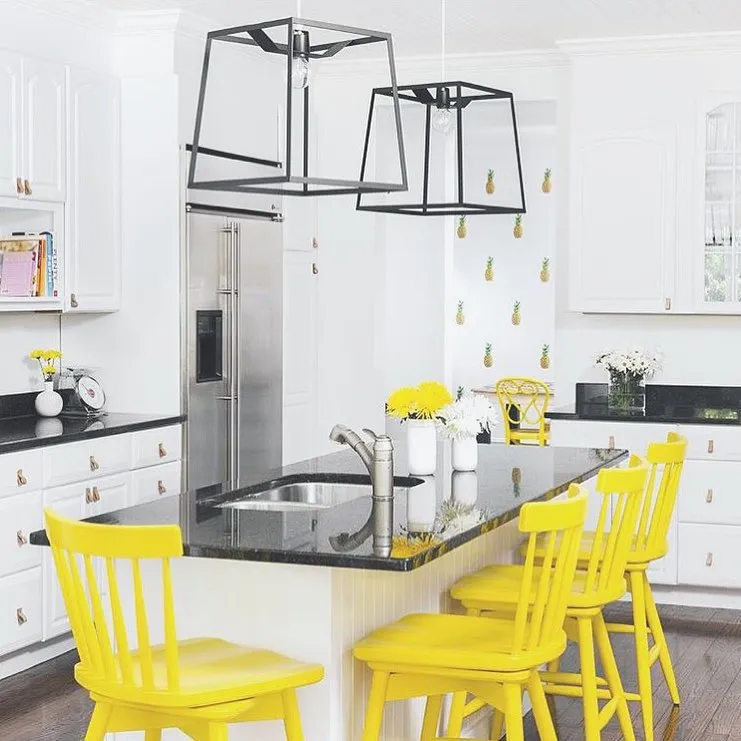
Pattern play is a fantastic way to inject personality and visual interest into your yellow and gray kitchen. Patterns can add a dynamic and unique element, preventing the space from feeling monotonous. Integrating patterns through backsplashes, wallpaper, or textiles can transform your kitchen into a statement space. When using patterns, ensure balance. Use a mix of large and small patterns to create visual interest and prevent the space from feeling overwhelming. Consider the scale of the patterns and how they interact with the other elements in your kitchen. The careful selection of patterns can elevate your kitchen design, making it more visually engaging.
Using Stripes, Geometric, and Floral Patterns
Stripes are a classic and versatile pattern that can be used in a variety of ways. Use striped wallpaper or a striped backsplash to add visual interest and create a focal point. Vertical stripes can make a room appear taller, while horizontal stripes can make it appear wider. Geometric patterns, such as hexagons or triangles, add a modern touch to your kitchen. Use geometric tiles for your backsplash or flooring for a bold statement. These patterns are perfect for adding a contemporary look to your kitchen design. Floral patterns bring a touch of nature and femininity to the space. Incorporate floral wallpaper or textiles to create a soft and inviting atmosphere. Ensure the patterns complement the overall color scheme, and avoid using too many competing patterns to prevent visual clutter.
Mixing and Matching Patterns
Mixing and matching patterns can be a fun way to add character and personality to your kitchen. However, it’s essential to do it carefully to avoid a cluttered look. Choose patterns that share a common color or theme to create a cohesive design. Start by selecting a dominant pattern, then incorporate smaller accent patterns. Use a neutral backdrop, such as a gray wall or countertop, to anchor the design. This neutral background will help balance the patterns and prevent the space from feeling overwhelming. Consider the scale of the patterns and their relationship to each other. The key is to create a harmonious balance between the patterns, adding visual interest without overwhelming the space.
Trend 5 Practicality and Functionality in Kitchens
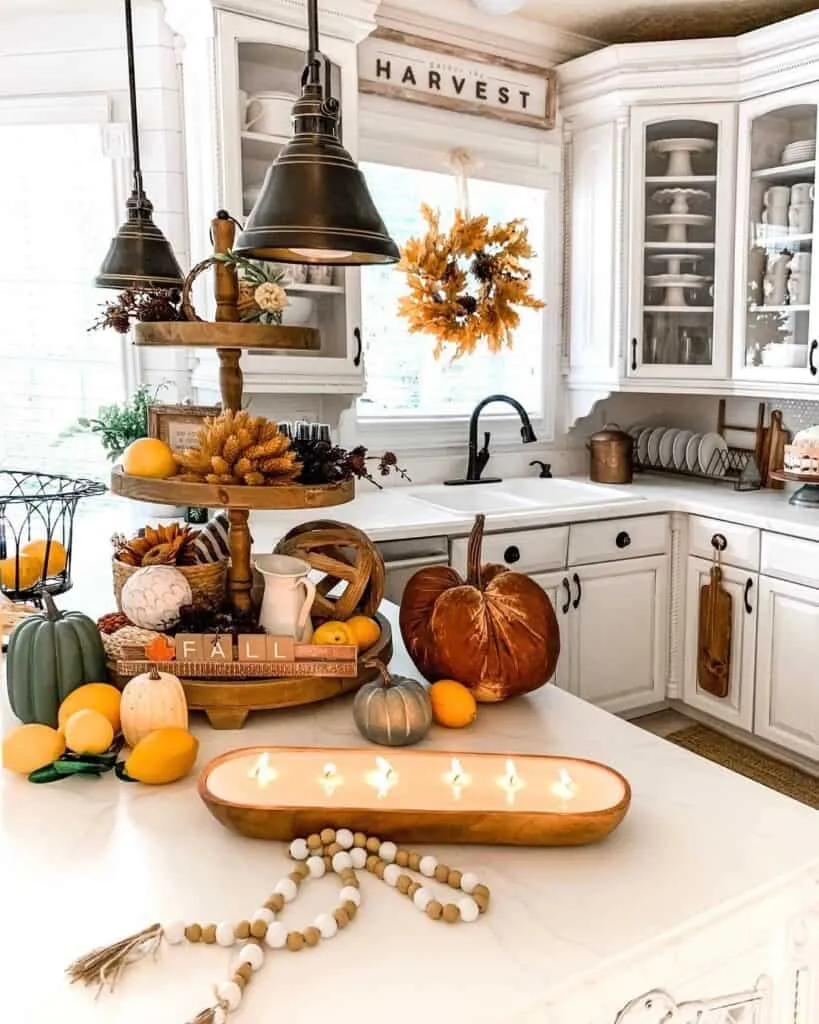
While design trends are important, the practicality and functionality of your kitchen should always be a priority. Your kitchen should be a space that’s both beautiful and easy to use. The functionality ensures a seamless cooking and dining experience. Considering layout, materials, and overall design can make your kitchen a more enjoyable space. Prioritizing functionality, along with aesthetic appeal, will lead to a successful kitchen remodel or refresh.
Choosing the Right Kitchen Layout
The kitchen layout significantly impacts functionality. Consider the work triangle – the distance between the sink, the cooktop, and the refrigerator. Ensuring this triangle is efficient can save you time and effort while cooking. Evaluate your available space and consider different layouts, such as a galley kitchen, an L-shaped kitchen, or a U-shaped kitchen. The best layout will depend on your kitchen’s size, shape, and how you use your kitchen. Ensure that there’s enough countertop space for food preparation, and incorporate storage solutions, such as pull-out drawers and pantry organizers, to maximize space. A well-designed layout makes the kitchen more enjoyable to use.
Selecting Durable and Easy-to-Clean Materials
Choosing durable and easy-to-clean materials is essential for any kitchen. Kitchens are prone to spills, stains, and heavy use, so selecting materials that can withstand these challenges is important. Choose countertops made of durable materials like granite, quartz, or solid-surface materials. These are heat-resistant and easy to clean. Select cabinets made of high-quality wood or MDF (medium-density fiberboard) with a durable finish. These materials can withstand daily use and are easy to maintain. Opt for backsplash tiles that are stain-resistant and easy to wipe down. The correct choice of materials makes your kitchen both beautiful and practical.
Conclusion
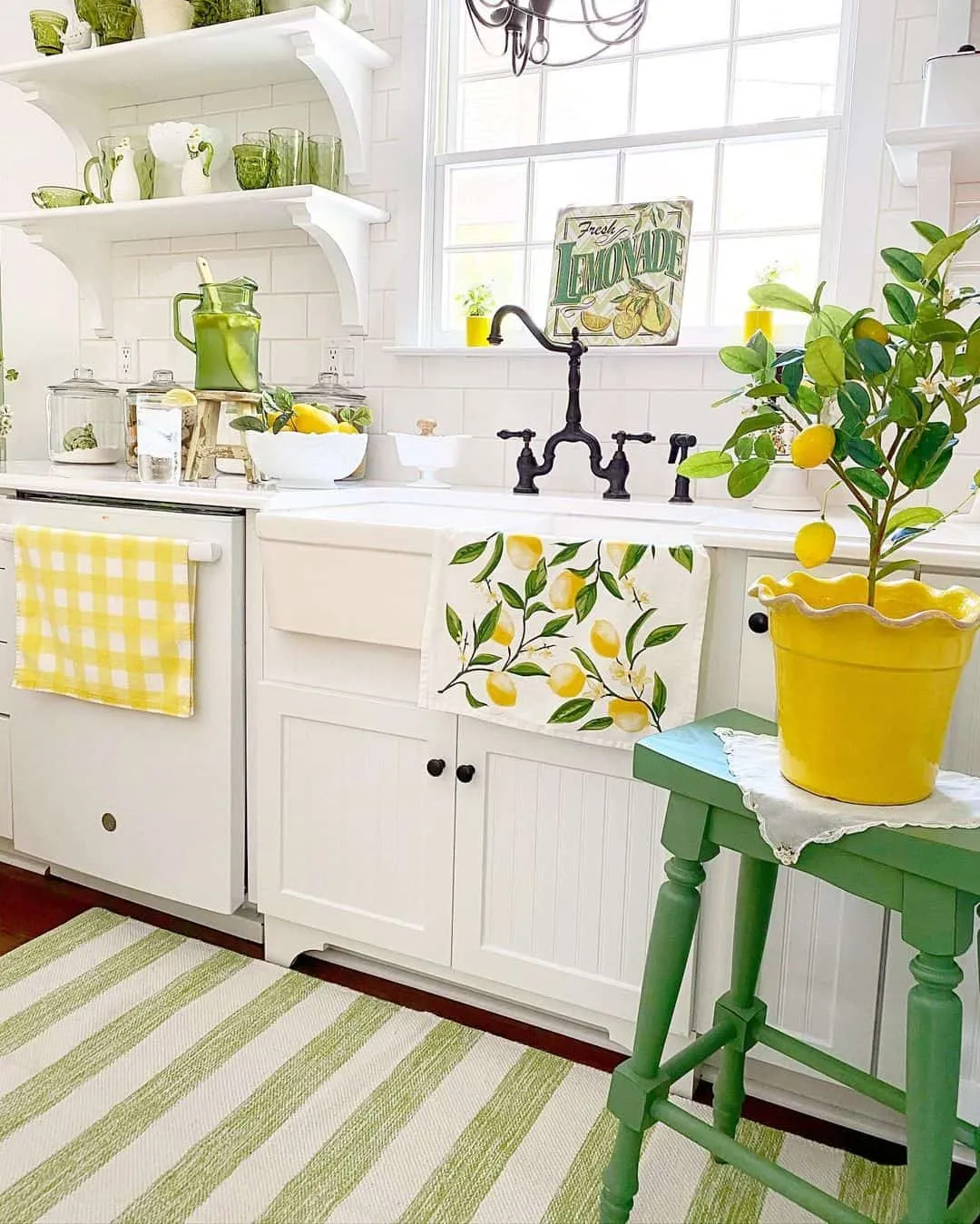
Incorporating yellow and gray into your summer kitchen decor is a winning combination. The top 5 trends highlighted in this article offer a comprehensive guide to creating a beautiful and functional kitchen. From pairing sunny yellow with sophisticated gray to maximizing natural light, incorporating textures and materials, playing with patterns, and prioritizing practicality, you can design a kitchen that’s perfect for summer. The versatility of this color palette makes it ideal for any design preference. Embrace these trends and transform your kitchen into a vibrant and inviting space that will make you love spending time in your home. With careful planning and attention to detail, you can achieve the kitchen of your dreams, creating a space that reflects your unique style and meets your practical needs.
